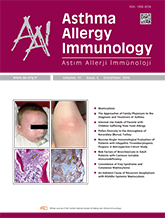


Pollen grains are known as important bio-allergens for sensitive individuals because of their presence in the air we breathe. Therefore, it is important to know the pollen load, major pollen types and sesonal variations of them for each populated region. The aim of this study was to determine the pollen types, densities and the pollen seasons of main pollen producers in Karacabey area. Pollen quantities and diversity studies were carried out by the gravimetric method in Karacabey (Bursa) atmosphere for two years, between 1 January 2015 and 31 December 2016. During sampling, the slides were changed weekly and examined by light microscopy. Annually 14226 pollen grains (15281 in 2015 and 13171 in 2016) belonging to 59 plant taxa (32 woody and 27 herbaceous taxa) were identified and pollen grains of woody taxa represented 72.63% (77.00% in 2015 and 68.27% in 2016) and herbaceous taxa represented 26.69% (22.30% in 2015 and 31.09% in 2016) of the annual pollen index (API) which was concordant and evaluated as a reflection of the dominant flora and maquis vegetation of the area. Types of pollen identified belonged to Cupressaceae/Taxaceae, Pinus, Poaceae, Quercus, Platanus, Ambrosia, Olea, Plantago, Amaranthaceae, Salix, and Fraxinus which were classified as dominant pollen types for the region and the the total amount for them was 88.21% of the annual pollen index. In this regard, April-May and August-September can be thought of as a risky period for sensitive individuals living in or visiting the region. One of the most exciting findings of this study was the high dominance of highly allergenic Ambrosia pollen in the atmosphere.